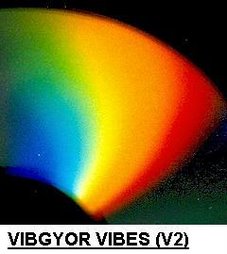A treasure house of History: Naneghat pass
The following bit of info is authentic in its source from Press Trust of India (PTI)
A treasure house of history, Naneghat pass lies in ruins.
It sereved as a busy trade route connecting Kalyan, Nalasopara with the upcountry.
Its not just an ancient pass, with its pristine beauty preserved, its also an incredible monument steeped in ancient Indian history.
Cut through a narrow gorge in the Sahyadri range, in western ghats, during the reign of Satvahanas (236 BC to 230 AD), the Naneghat pass once served as a busy trade route linking up country with the seaports of north Konkan.
Located about 30 kms west of the historic town of
The most important inscription is one incised on the walls of a large cave along the trade route in the pass, which is of immense importance as far as the origin of the Satvahana rule is concerned and records the governance and prowess of third Satvahana king, Satkarni I, and performance of different sacrifices by him.
But the central figure of the inscription is Naganika, perhaps the first woman in
Access to Naneghat not inaccessible though, one has to walk 5 kms on foot, crossing rivulets and paddy fields, from Ghatghar, the last roadhead 25 kms from Junnar, or from Konkan side, to climb up a forest path from nanetal hamlet near Vaishakhare on Mumbai-Ahmednagar highway in Thane district before reaching the pass.
A well known landmark of Naneghat is a thumb shaped cliff projecting high above the pass.
At the start of this 5 km long ancient trade route is a narrow gorge, just two to five metres wideand about 80 metres in length with steps cut into rocks and clustered with caves on both sides.
A sharp serpentine descent fro the gorge brings one to a plateau, locally known as Shingru pathar, where water cisterns had been built for passers bu further down, the slope is gentle and the ghat ends at Nanetal.
Just at the entrance to naneghat is a tiny Ganesh cave to the left and opposite it a huge stone pot, believed to be treasury box for collecting toll from incoming goods.
A brief walk through the gorge brings one to a large cave full of inscriptions and a gallery with sculptures od Satvahanas.
On two walls of the cave is an inscription on Naganika engraved in old Brahmi characters, in the then prevalent Prakrit language. But the record is very much mutilated and has been interpreted by epigraphist with conjectures and speculative combinations, giving rise to different views.
According to a rekonwned indologist, Prof. G Buhler, Naneghat inscriptions, which belong to the oldest historical documents of the western India, are in some respects more interesting thanand important than all the other cave inscriptions taken together.
The inscriptions, scholars believe, must have mentioned the real year of King Vedisri, son of Satkarni I and Naganika, as also the season, fortnight and day according to the prevailing custom in the South. All this is noe lost and only the name of the ruling King Vedisri is legible.
Naganika’s identifications as brought by the inscriptions in the cave has been corroborated by a joint silver coin of Satkarni and Naganika found near Junnar recently, with a legend on irs observe—‘Rano Siri sata(ka)’ along with Naganikaya, inscribed in the rectangle below, providing indisputable prrof of their maritial relationship and her being the queen of Satkarni I.
The coin, says epigraphist and numismatist, Prof. Shobhana Gokhale, with its originality and exclusive obverse, indicates Naganikas prominent position in the political field.
The inscriptions on the cave also records the flamboyant accounts of no less than 18 sacrifices performed together by Satkarni and Naganika, icludint two Ashwamedhas, a Rajsuya and according to Prof. Gkhale, a Vaypeya sacrifice, as well as number of cows, horses, elephants, chariots, garments and karshapana coins donated by the couple on the occasion.
The celebration of Rajsuya suggests Satkarni’s coronation and two Ashwameadhas demonstrate his political supremacy, Prof Gokhale told PTI.
The inscription is also the earliest epiraphical evidence of ancient numerals, which were used to record to denote various donations, Prof. Gokhale pointed out.
Naganika, after the death of her husband, ruled the kingdom for sometime with the help of her father, all of which are recorded in the inscriptions.
The third wall of the cave shows traces of eight life-size relieve figues with their names inBrahmi script. The figures have been identified by the scholars as that of king Simuka, the couple of Naganika and Satkarni, prince Bhayala, Maharathi Tranakayira, prince hakusri (Saktisri of the inscription) and prince Satvahana.
The name of the fifth figure is lost and scholars speculate it to be that of price Vedisri, who later became the king.
‘Erection of relievo figures of the members of the royal family on the trade route is unique in ancient Indian History, for nowhere except in Naneghat, one comes across figuresof royalities, which is at once exotic and incredible.’ Prof Gokhale said.
The existence of huge stone pot at the entrance to Naneghat is thus believed to be for collection of tollas well as a form of octroi on the incoming goods.
